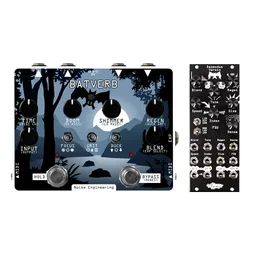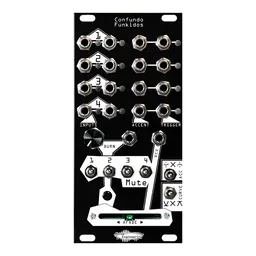With the release of Sinc Bucina, we realized there were a couple of questions it would be handy to answer. What is a low-pass gate? How’s it different from its predecessor, Sinclastic Empulatrix? What do those numbers mean? What makes SB cool? Should you buy one? In the following appropriately-named sections, we’ll answer all these questions!
What is a low-pass gate?
Low-pass gates (or LPGs) started with the Buchla 292. Over time, they’ve evolved, but the most common configurations these days include some sort of decay envelope controlling a VCA and a low-pass VCF. Obviously, this isn’t the only type (some don’t have VCAs, some don’t have envelope generators, etc). LPG’s are useful as they can imitate the acoustic response of an object: imagine striking a piece of metal, a gong, or other similar item. Initially, there’s a transient, loud and harmonically full. Over time, as the vibrations die down, the ringing decays in volume and also harmonic content. Similarly, a low-pass gate opens quickly, and decays in both volume (thanks to the VCA) and upper harmonics (thanks to the low-pass filter).
Often, LPGs use vactrols to create their decay envelopes. But not always.
Sinc Bucina does more than just your normal LPG behavior. However, with its Ping input it can function exactly like we’ve just described, if that’s what you’re into. It doesn’t use vactrols, meaning its all-analog envelope generator has a much wider range of decay times available (around 200ms to 7s). The Ping input is voltage dependent, meaning you can run your trigger signal through an attenuator or a VCA to create even more dynamic patches with it. It also has a variety of filter options, making it super versatile, dynamic, and fun!
How’s it different from its predecessor, Sinclastic Empulatrix?
Sinclastic Empulatrix was one of our first modules ever, and recently went into retirement. It also featured a similar envelope/slew. However, in sound, it was completely different. In terms of harmonic response, it was kind of the total opposite: the VCA actually distorted as the signal got quieter, giving it a unique response not found many other places. SB also has multiple filter and VCA modes, as well as separate gate and trigger inputs instead of using a switch. If you have an SE, an SB will complement it nicely!
What do those numbers mean?
You’ll notice that SB has a switch labeled 6/0/12. What’s that all about? The filter has two slopes available: a kinda steep and not very resonant 12dB slope and a not very steep and pretty resonant 6dB slope. Both slopes have a bit of gain going into the filter, and give your sound a nice and saturated tone. 0 mode bypasses the filter (get it? 0dB filter slope? We thought it was funny, okay?). You can use it as a great-sounding VCA/envelope combo for any of your oscillators in this mode! Handy!
What makes SB cool?
Everything.
Like we talked about before, SB’s Ping input gives you a unique voltage-dependent LPG, with adjustable release times over a wide range. You have two filter slopes and a plain VCA mode. But that’s not all. The Gate input gives you a slew: if you send in a gate, you have an ASR envelope with adjustable Attack and Release. However, since it’s a slew, you can send in whatever CV you want (like a sequence from Mimetic Digitalis) and smooth it out with adjustable rise and fall times. The circuit also acts as a half wave rectifier, meaning it rejects negative voltages and just gives you the positive ones. The cool thing about that is that if you send in an audio signal (like a drum loop, samples, or some other sequence) you can use the slew as an envelope follower! Crazy stuff. The envelope/slew circuit also has its own CV output if you want to patch the envelope to other parts of your system. How cool is that?
Should you buy one?
Yes!
How about a demo?
Well here you go! We run a sequence from the new Cursus Iteritas Percido in freerun mode first through SE and then through SB’s various modes.
Still in love with se? Want one of each?
Grab one now while they are still available from your favorite retailer!
In conclusion
SB is really cool. It’s got a lot of utility outside of what you’d find in a normal low-pass gate and in just 4hp it’s a no-brainer. It also sounds fantastic with all of our oscillators! SB ships April 18 2019, and preorders are open now. More video content is coming soon, or wait until your retailer has them in stock to play with them and check them out for yourself! We hope you enjoy!
Want to learn all about the other two modules we just released, Cursus Iteritas Percido and Terci Ruina? Check out this blog post! Want something to go with your new Sinc Bucina? Grab an oscillator using this handy guide!






